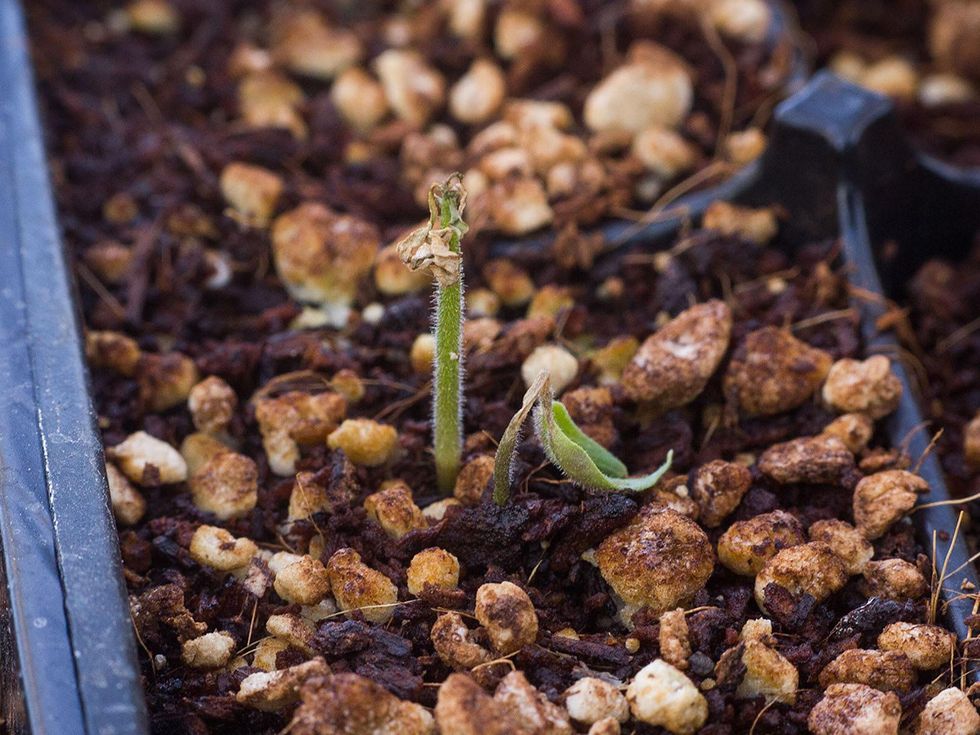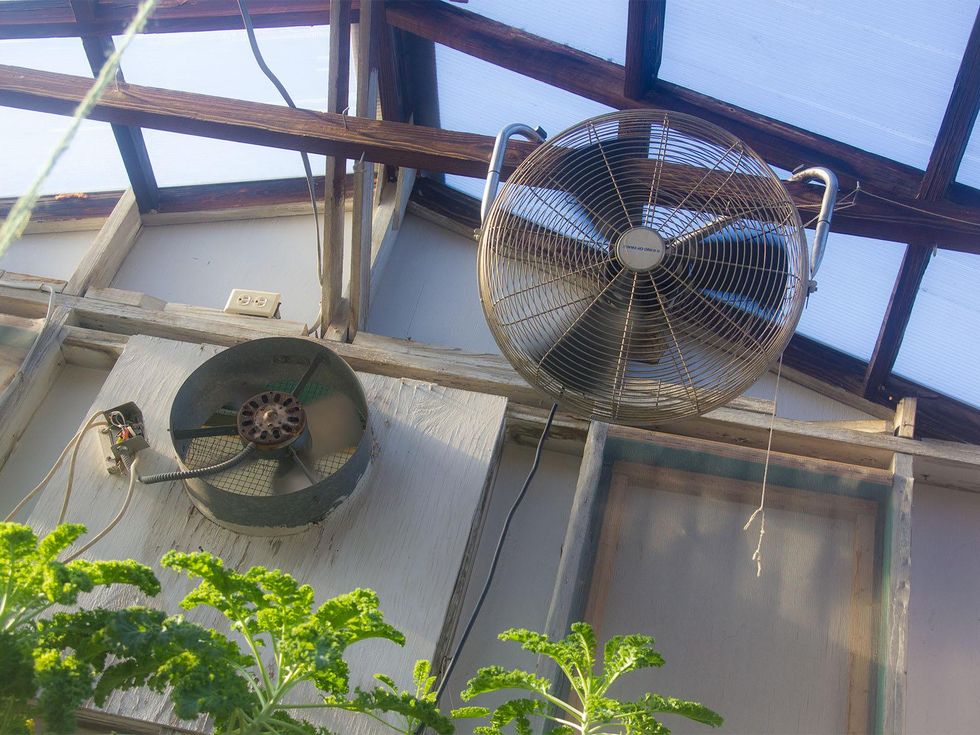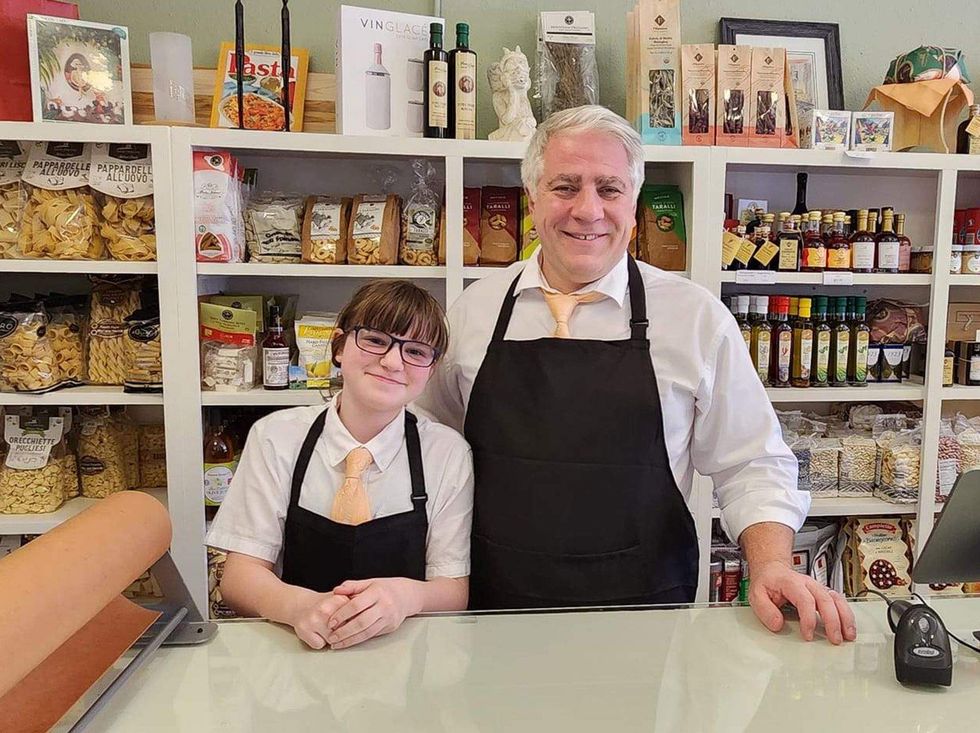The Farmer Diaries
Texas farmer admits his 4 worst mistakes so far and how to avoid them
Halfway through February, the only thing growing in my greenhouse is proof of my incompetence as a farmer. Six weeks ago, I started the 2015 growing season by sowing seeds in small trays of growing mix. These were vegetables and flowers that must be started from seed, including Texas Wild tomatoes, Chocolate Beauty bell peppers and Azteca Nicotiana tobacco. I prefer these rare varieties because they've proven to be hardier, more flavorful or more fragrant than standard garden center offerings.
Additionally, I planted mints, lavender, basil, oregano and about a dozen other herbs, all the while imagining how beautiful and tasty they'd be once I set them out in the spring to grow in my raised bed garden.
But now, when I should have a greenhouse full of young seedlings 6 inches tall, I have mostly empty trays of seed starting mix, with just a few struggling sprouts here and there.
In the past seven years of my attempt to grow my own food, I've suffered seedling losses that have been discouraging, but this year has been the worst one yet. I've never felt less capable of doing anything, and I've considered simply giving up.
But I think I know a few reasons why I've failed this year and how to remedy them as I start over:
The problem: old seed
Seed can fail to germinate when temperatures or moisture aren't quite right, but I think much of my problem lies in the fact that I bought very little new seed stock this year. In prior years, I've spent as much as $200 after browsing seed catalogs; if I had an unlimited budget, I'd have bought two of everything.
This year because of a few financial setbacks and medical bills, I did not buy new seed. Seed can last for years if stored properly, but my boxes of extra seeds were stored in a room that gets as hot or cold as it is outside. This runs the life out of any seed.
Many of the seed packs I planted from were dated 2012 or earlier, so some of my stock was as much as 5 years old.
The solution: I need to buy new seed. I've already seen the difference between the old jalapeño seed I planted in January and a fresh pack I bought at the beginning of February. The old pack produced maybe three seedlings out of 12 seeds. The new pack resulted in 11 sprouts out of 12 seeds planted.
The problem: root rot
Many of the seeds that did sprout wilted and died quickly. This is often due to a condition known as damping off, or root rot, and it is caused by pathogens in the soil or seed starting mix that invade the plant and kill its roots. Overly moist soil and cool, stagnant air are the perfect environment for the pathogens. Whether in a greenhouse or a windowsill indoors, damping off can strike a seedling that's kept cold and damp.
The solution: I've restrained myself from watering my seed starting trays as much. This is a challenge for me because I like to feel like I'm doing something every day; watering makes me feel productive. I've also hung a fan overhead and aimed it at the seed starting trays. My goal now is to water as much as can dry out in a day, allowing the surface of the seed starting medium to dry out before sunset so that pathogens don't proliferate. The fan helps dry off the mix and keeps the air circulating.
The problem: bugs
Among my many seed starting trays, I was excited to see a good showing of Tulsi basil, lavender and spearmint. Then suddenly one day, I had only one basil seedling. Another day, I couldn't find mint at all, and one lavender remained.
The culprits were crickets, sowbugs and a few rough stink bugs I can't seem to get out of my greenhouse.
The sowbugs, the ones that roll up into little balls when threatened, I inadvertently introduced into the greenhouse myself after using potting soil that had been sitting outside on the ground for the last year. I now know the ideal conditions for raising a crop of sowbugs: a wet bag of dirt. They usually only eat dead plant matter, but give them a tender seedling, and they won't turn it down.
An invasion of birds this winter wiped out most of the crickets in the yard, but some survived in the recesses of the greenhouse.
The solution: I used an insect repellent and insecticide with wintergreen oil as its active ingredient. The problem is under control, but not over. I've also enclosed especially valuable seed in a large sweater storage container with a window screen over the top. Exclusion of insects is always more effective than sprays.
The problem: Desert-like climate
The fourth issue that has compromised my seedlings and potted plants has been a wild swing in temperatures from day to day and from day to night. I don't have automated climate control in my greenhouse, so I can only guess what I need to do to keep temperatures right during the night or for the day I leave the house.
One wrong estimation and I end up with a propane heater running full blast when the sun is shining. Or if the night is cold and the propane runs out, temperatures plunge. If these extremes in climate happen on the same day, the temperature can swing by as much as 50 degrees. This is what it's like in the desert: cold nights and blazing hot days.
Such temperature extremes can force seeds into dormancy; this allows them to last longer in the wild, waiting for the right season before they sprout. Once a seed becomes dormant, only a combination of the precisely correct conditions will unlock it.
Also, against the wall of the greenhouse, I had placed a rose bush I rooted last year. When I picked it up recently to see why it was dying, the pot felt as hot as a biscuit straight out of the oven. I watered the soil, and the cold water that entered the pot turned into hot water as it exited as runoff. This plant was baking in the sun. Similarly, if a soil mix with seeds should get this heated, the seeds would surely cook.
The solution: I will have to do a better job of watching the temperatures in the greenhouse. The difference from day to night should be 15 degrees or less. Wider swings stunt most garden plants.
I also need to keep all plants and seedlings about a foot away from each wall. The same would be true for pots or seedlings kept in a window. Too close to the glass, the plants can overheat, as if they were in a solar collector.
Starting over
I've reseeded most of my seed starting trays, and I'm watching out for all my previous errors. I won't give up on my ambition to grow my own food and become a genuine farmer. I get some encouragement from having read recently that to be good at anything, you first must know how bad at it you are. If this is true, then I'm set for a comeback.




 Ari Lowenstein and aide at Ari's PantryAri's
Ari Lowenstein and aide at Ari's PantryAri's